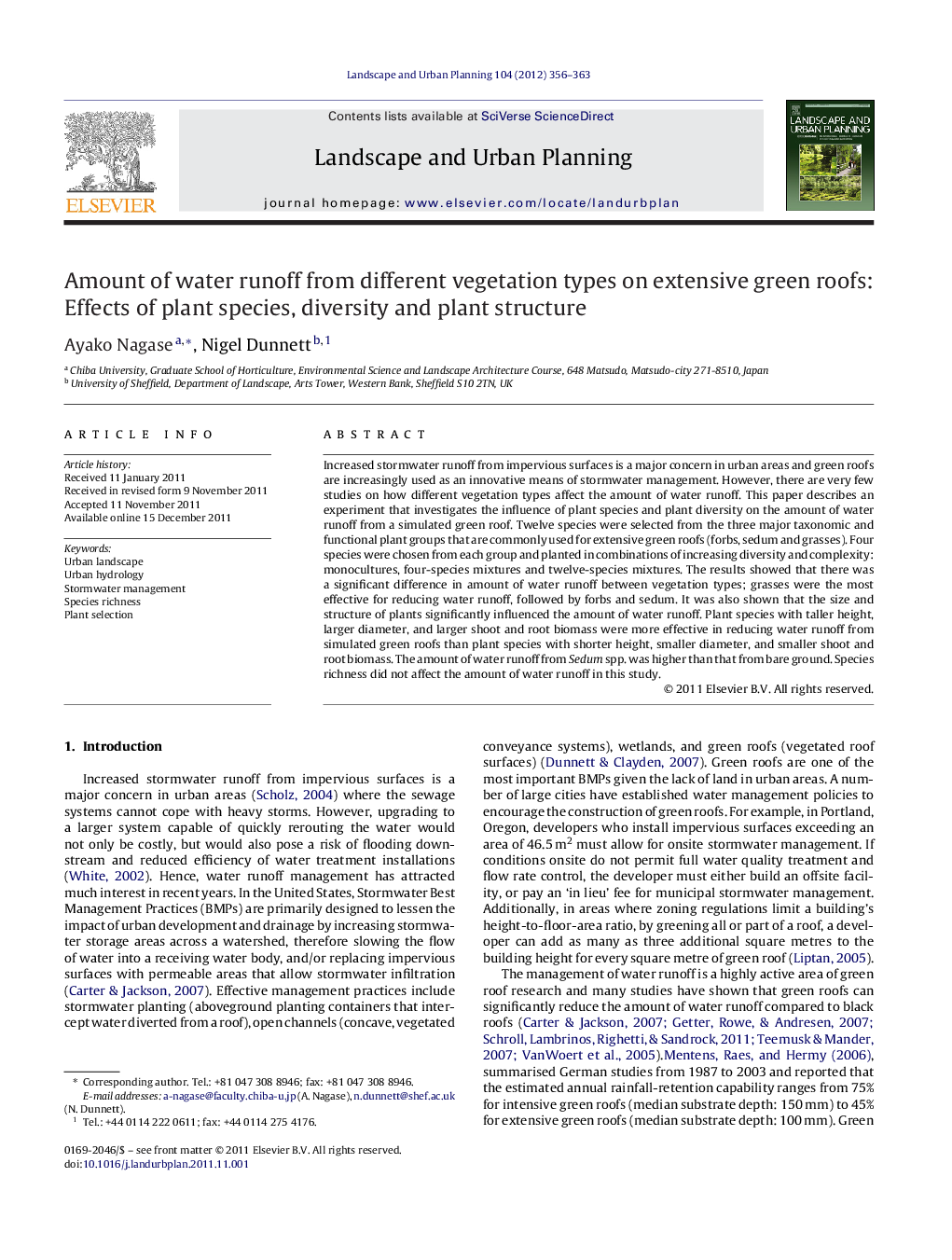| Article ID | Journal | Published Year | Pages | File Type |
|---|---|---|---|---|
| 1049661 | Landscape and Urban Planning | 2012 | 8 Pages |
Increased stormwater runoff from impervious surfaces is a major concern in urban areas and green roofs are increasingly used as an innovative means of stormwater management. However, there are very few studies on how different vegetation types affect the amount of water runoff. This paper describes an experiment that investigates the influence of plant species and plant diversity on the amount of water runoff from a simulated green roof. Twelve species were selected from the three major taxonomic and functional plant groups that are commonly used for extensive green roofs (forbs, sedum and grasses). Four species were chosen from each group and planted in combinations of increasing diversity and complexity: monocultures, four-species mixtures and twelve-species mixtures. The results showed that there was a significant difference in amount of water runoff between vegetation types; grasses were the most effective for reducing water runoff, followed by forbs and sedum. It was also shown that the size and structure of plants significantly influenced the amount of water runoff. Plant species with taller height, larger diameter, and larger shoot and root biomass were more effective in reducing water runoff from simulated green roofs than plant species with shorter height, smaller diameter, and smaller shoot and root biomass. The amount of water runoff from Sedum spp. was higher than that from bare ground. Species richness did not affect the amount of water runoff in this study.
Graphical abstractFigure optionsDownload full-size imageDownload as PowerPoint slideHighlights► Influence of vegetation diversity on the amount of water runoff is examined. ► Grasses are the most effective for reducing water runoff. ► Sedum is the least effective for reducing water runoff. ► Size and structure of plants influence the amount of water runoff. ► The species richness does not affect the amount of water runoff.
